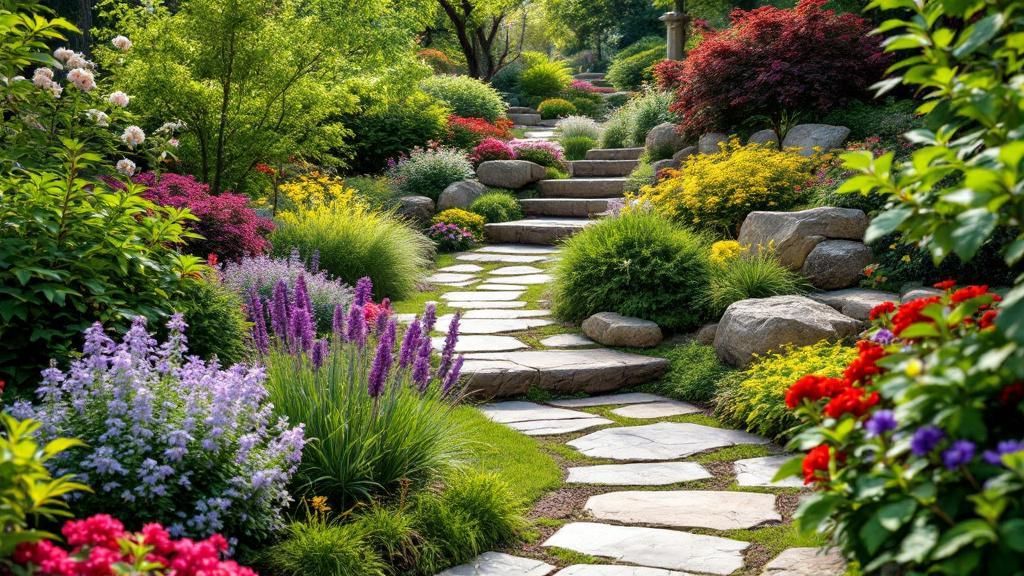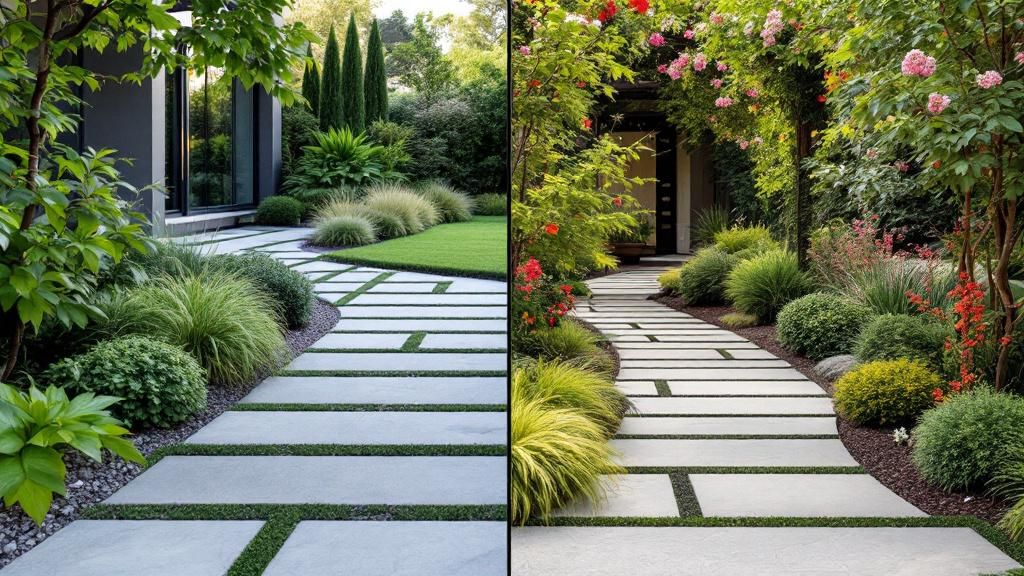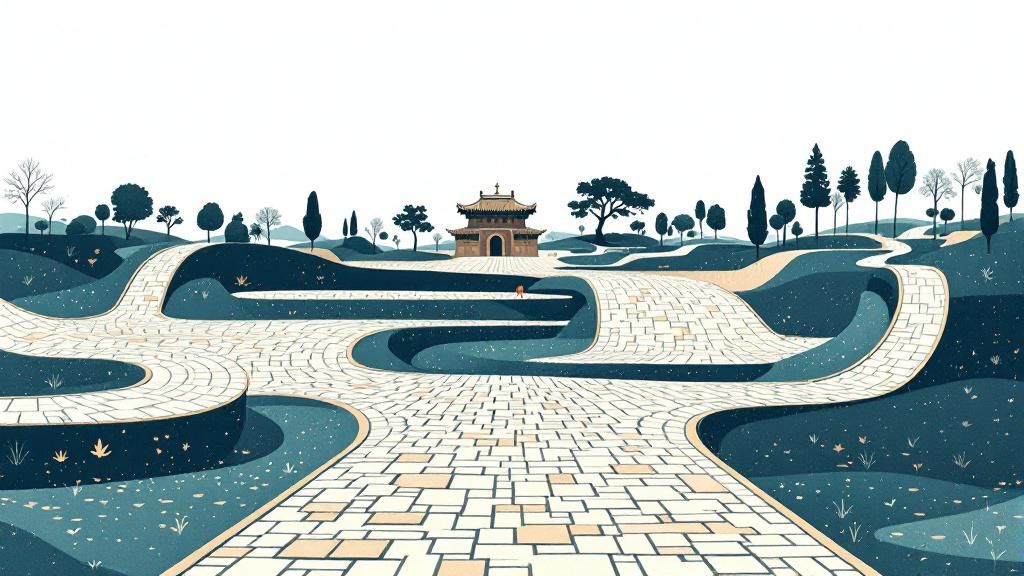
Designing Durable Hardscape Pathways and Walkways for Anchorage Landscapes
Key Takeaways
-
Hardscape walkways improve both the functionality and aesthetic of outdoor spaces.
-
Materials like pavers, flagstone, and retaining walls can handle Anchorage’s freeze-thaw cycles.
-
Paths need to be carefully designed with drainage, slope, and long-term use in mind.
-
Integrating plants, lighting, and borders enhances usability and visual interest.
-
Hiring local professionals ensures proper construction suited for Anchorage’s unique terrain.
Walkways and pathways do more than guide your steps—they connect the landscape into a cohesive, livable space. In Anchorage, Alaska, these features must also stand up to extreme cold, shifting soil, and seasonal changes. Whether you’re upgrading a backyard or developing a commercial property, getting the hardscape right is key to both safety and long-term performance.
This guide explores how to plan and build lasting walkways suited to Anchorage’s environment.
Start with Purpose and Placement
Before you break ground, determine the purpose of the walkway:
-
Primary paths connect major destinations, like driveways to front doors or patios to gardens.
-
Secondary paths serve functional or aesthetic goals, like garden paths or routes to sheds.
Tips for Pathway Planning:
-
Follow natural foot traffic patterns
-
Use curves and borders to soften geometry and improve flow
-
Avoid slopes over 5% unless integrating steps or retaining walls
A well-planned layout minimizes maintenance and maximizes safety.
Choosing the Right Materials for Anchorage
The climate in Anchorage demands durable, weather-resistant materials. Choose options that resist cracking during freeze-thaw cycles and provide solid footing year-round.
Common Hardscaping Materials:
-
Concrete pavers – Affordable, versatile, and slip-resistant
-
Natural stone – Offers a rustic look and excellent durability
-
Gravel with edging – Great for informal or garden paths
-
Stamped concrete – Decorative and lower-maintenance than traditional stone
Avoid smooth-surfaced tiles, which can become dangerously slick during icy months.

Incorporating Retaining Walls for Elevation and Structure
Anchorage’s sloped and uneven terrain often requires retaining walls. These features aren’t just functional—they’re an opportunity to enhance the visual appeal of your landscape.
Benefits of Retaining Walls:
-
Prevent erosion and manage water flow
-
Create usable space on slopes
-
Improve the aesthetics of multi-level yards
Materials for walls can match or contrast with walkway materials depending on the desired look.
Landscaping Around the Path
A walkway doesn’t stand alone. Surrounding landscaping plays a major role in defining the experience of using the path.
Smart Design Additions:
-
Native shrubs and perennials for low-maintenance greenery
-
Mulched borders or stone edging for weed control
-
Lighting for nighttime safety and ambiance
Incorporating hardy Alaskan plants ensures the landscaping thrives with minimal upkeep.
Anchorage-Specific Considerations
Building walkways in Anchorage involves more than just picking materials. It means accounting for seasonal snow loads, ice buildup, and freeze-induced soil movement.
Practical Tips:
-
Proper drainage is critical to avoid pooling and ice patches
-
Frost-resistant base layers prevent heaving and shifting
-
Textured materials improve traction in snow and rain
Installing edging, geotextile fabric, and compacted gravel beneath the pathway ensures the installation stays level and secure.
The Role of Professional Installation
While DIY is tempting, hardscape pathways demand precise execution, especially in Alaska’s harsh conditions. Local contractors can:
-
Evaluate soil and grade conditions
-
Ensure proper sub-base compaction
-
Recommend weather-suitable materials and finishes
Titan has years of experience working with residential and commercial properties across Anchorage. From retaining wall construction to detailed walkway planning, their team knows how to build with longevity and seasonal function in mind.
Design Trends to Consider
Looking to modernize your landscape? Here are some current walkway ideas that work well in Anchorage:
-
Mixed materials (e.g., stone + steel or gravel + pavers)
-
Subtle lighting set into the borders or steps
-
Wider walkways that double as gathering spaces
-
Natural curves that mimic organic flow through the yard
Whether your style leans rustic, minimalist, or traditional, there’s a design style to match your home’s architecture and site layout.

Why It’s Worth the Investment
A well-built walkway not only boosts curb appeal but also improves functionality, safety, and property value. In climates like Anchorage’s, it’s not just about looks—it’s about building something that lasts through snow, rain, and sunshine.
A properly constructed hardscape walkway can last 20+ years with minimal maintenance. And when paired with strategic landscaping, it ties the entire property together.
Titan works with property owners to design and install walkways that handle Alaska’s climate while elevating the look and feel of your space—without compromising on durability.
FAQs
How wide should a hardscape walkway be?
Main walkways should be at least 3–4 feet wide to allow two people to walk side-by-side comfortably.
What’s the best base for hardscape in cold climates?
A 4–6 inch layer of compacted gravel or crushed stone is ideal. Topped with sand or screenings, this base resists frost heave.
Can hardscape walkways handle snow removal?
Yes—just be sure the materials are flat and durable enough to withstand snow shovels or plows. Avoid delicate patterns that could chip.
When’s the best time to install pathways in Anchorage?
Late spring to early fall is ideal, when the ground is thawed and dry enough for proper base prep and curing.